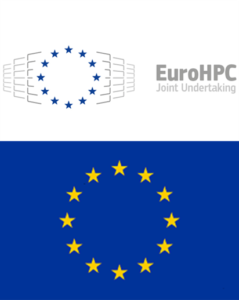In this pilot, KPIs have been partially refined: time-to-design reduction is always expected >-50% wrt current status while the LES/HPDA analysis time has been set >-30% wrt current (1 week). Overall LPT Aero design efficiency improvement has not been changed: forecasts confirm a potential gain of +0,30%.
In accordance with the plan, the main activities have been focused on the validation of the numerical setup for high fidelity LES calculation with STARCCM+ and its detailed post-processing by means of advanced HPDA techniques. Moreover, the well-established TensorFlow/Keras framework has been selected for the AI tools development.
Currently, LES/HPDA validation is carried out exploiting the computational resources granted by a PRACE-ICEI project at CINECA on GALILEO100 supercomputer, for 2.4M core hours. This has allowed the pilot to obtain a first relevant test and, at the same time, to consolidate the HPDA approach leveraging on the current MATLAB routines.
Next months will be characterized by several developments and upgrades concerning all the main aspects of the turbine pilot. First of all, the complex workflow for turbine blade optimization will be implemented in Galileo100 and a first optimization campaign will be carried out, thus providing a first large database as a benchmark for AI tools. At the same time, HPDA tools will be ported to Python and relevantly improved by exploiting GPUs.
Finally, the first AI models, based on TensorFlow, will be tested and consolidated against the previous in-house tools, opening the path for successive improvements: the collaboration with the WP3 will allow the introduction of accelerators and then the drastic reduction of computational costs.
Acronyms:
AI : Artificial Intelligence
LES : Large Eddy Simulation
HPDA: High Performance Data Analytics
LPT: Low Pressure Turbine



